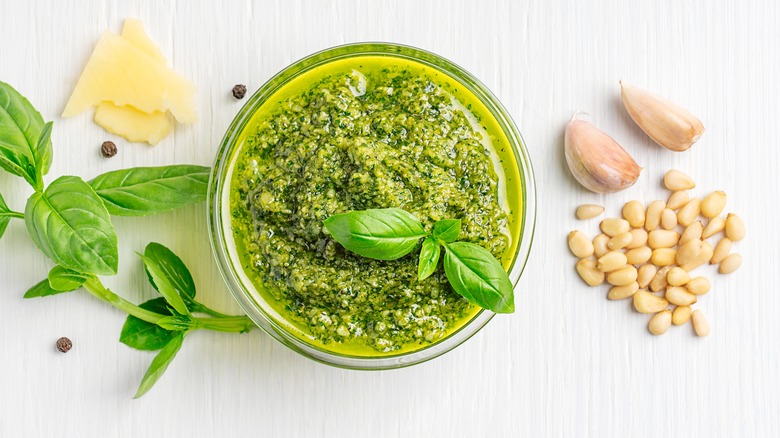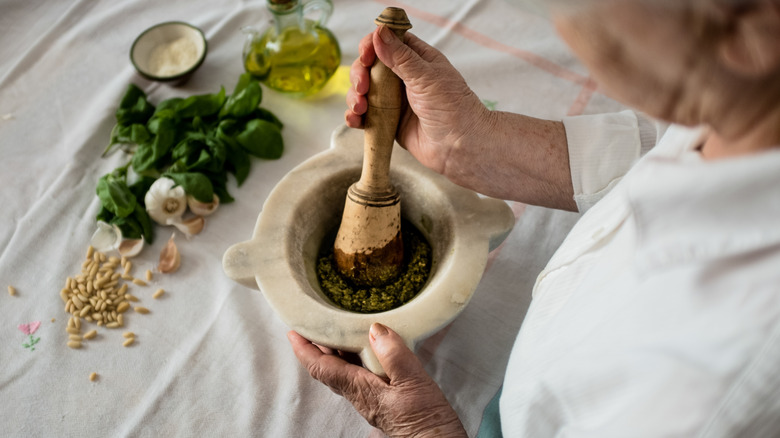The Ancient Origins Of Pesto
We have a lot to thank the Italians for. They've given us some of the most iconic foods of all time: marinara sauce, pizza, and, of course, pesto. Pesto is not one of those eating experiences you're likely to forget. It is an aromatic, flavor-packed sauce of basil, nuts, oil, and cheese. The region of Liguria in northwest Italy is the epicenter of pesto culture and basil production. Saveur journeyed to the coastal town of Pra', where it is said that if "you don't grow basil, you're a nobody." And since Pra' is home to the best basil grown in Liguria, it is the best for making pesto.
The origin of this brilliantly green, fragrant little sauce stretches back centuries to Roman times. Oddly enough, the recipe for Pesto Genovese is surprisingly modern, having not appeared in print until 1865 (per Via Verdi). As with most modern European food, there is an ancient equivalent. In the case of pesto, it has two ancestors: moretum and agliata.
It's all in the mortar
The connecting thread linking these three recipes of moretum, agliata, and pesto together is the time-honored tool duo: the mortar and pestle. According to Tavola Mediterranea, the word moretum in Latin translates roughly to 'salad.' The word also shares a root with 'mortarium,' meaning mortar. A common tool in Roman kitchens, the mortar is a key instrument in making moretum. The recipe consists of a simple combination of cheese, herbs, olive oil, and salt. As in pesto, the herbs are crushed in the mortar and mixed with cheese and olive oil.
Agliata enters the picture in the middle ages, according to Via Verdi. This sauce is a pungent concoction of garlic, breadcrumbs or walnuts, olive oil, red wine vinegar, salt, and pepper. It is similar in texture to pesto and used much in the same way as an accompanying sauce for cooked pasta (via Taste Atlas). So, if you're a fan of pesto, it will be worth your while to try its savory ancestors. You'll be able to taste the history and inspirations behind one of Italy's most famous exports.

